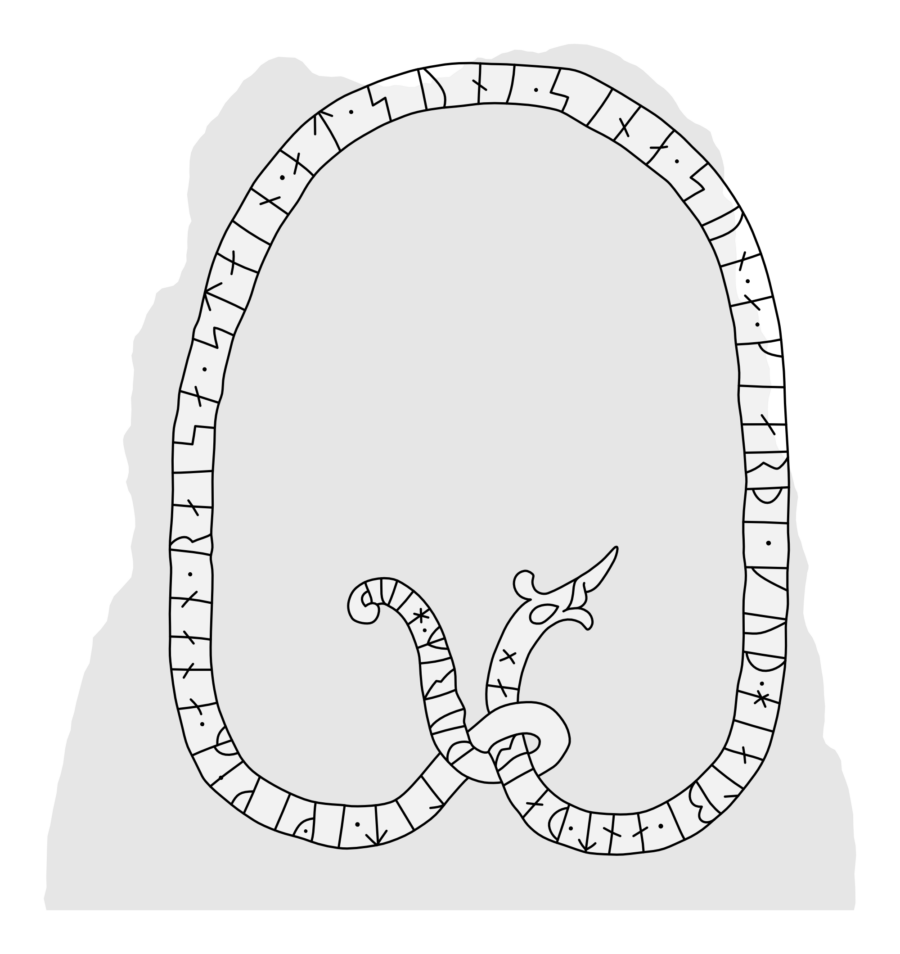
Runestone Sö 35
November 4, 2021
The carvings of the stone are in the runestone style Pr 2 (c. 1020-1050) pertaining to the late Ringerike style.
The inscription is signed by the runemaster Thórir.
The granite stone is c. 1,60 m tall, 1,35 m wide across the base and 0,90 m wide at the top of the decoration.
Runic inscription
The first part of the rune text begins at the tail end of the animal, just before the loop, and runs towards the head. The second part begins after the loop and runs towards the tail end.
Runes
[1] ᛚᛁᛏ ᛫ ᛁᚵᛁᚴᛂᛦ ᛫ ᛅᚾᛅᚾ ᛫ ᚱᛅᛁᛋᛅ ᛫ ᛋᛏᛅᛁᚾ ᛫ ᛅᛏ ᛫ ᛋᚢᚾᛁ ᛫ ᛋᛁᚾᛅ ᛫ ᛋᚢ[ᚾ᛫ᛅ] ᛫ ᚴᛁᛅᚱᚦᛁ ᛫ ᚴᚢᚦ ᛫ ᚼᛁᛅᛚᛒᛁ ᛫ ᛅᚾᛏ ᛫ ᚦᛅᛁᚱᛅ × [2] ᚦᚢᚱᛁᛦ ᛫ ᚼᛁᚢ ᛫
Transliteration
lit * igikeʀ * anan * raisa * stain * at * suni * sina * su[n*]a * kiarþi * kuþ * hialbi * ant * þaira × þuriʀ * hiu *
Old Norse
Let IngigæiRR/Ingigærðr
annan ræisa stæin
at syni sina,
syna gærði.
Guð hialpi and þæiRa. ÞoriR hio.
English
Ingigeirr/Ingigerðr had
another stone raised
in memory of his/her sons,
made them visible.
May God help their spirits. Thórir cut.
Notes
The runic text on the stone is the second part of two beginning on Sö 34.
The inscription is in the verse form fornyrðislag.
The head of the animal has been reconstructed here based on similar motifs of the same type (see, for example, U 623).
———
Tjuvstigen, Södermanland, Sweden
Sö 35